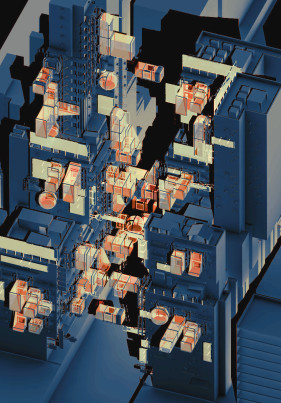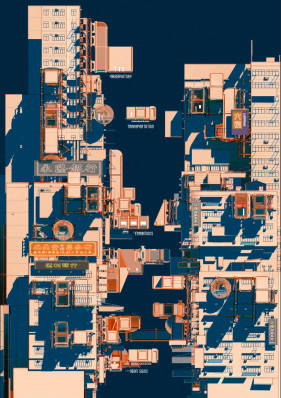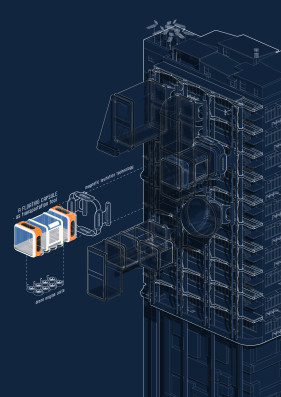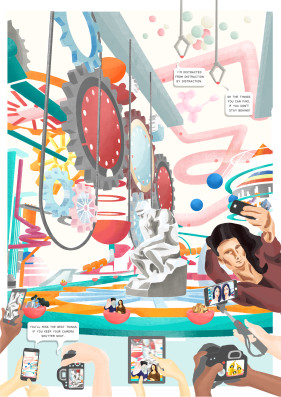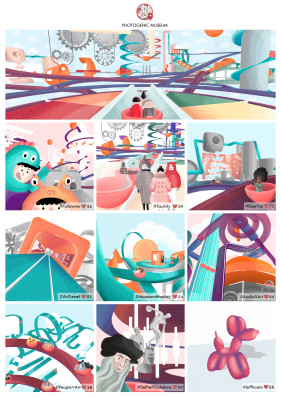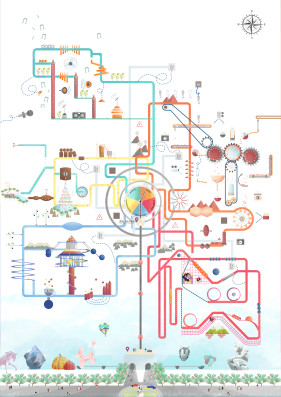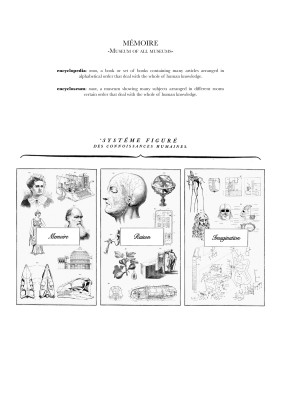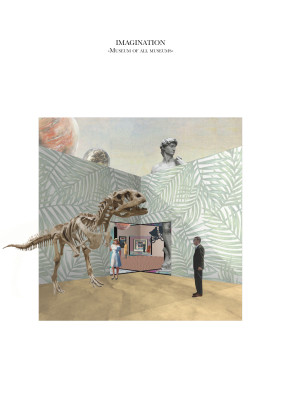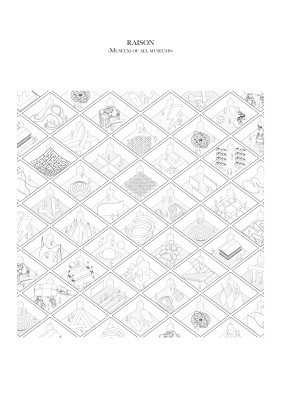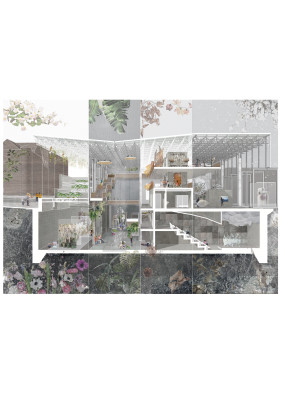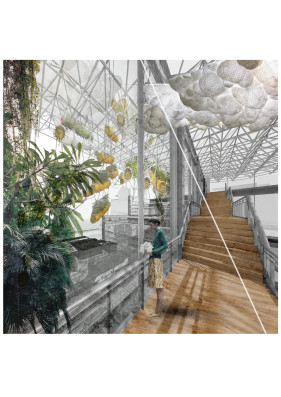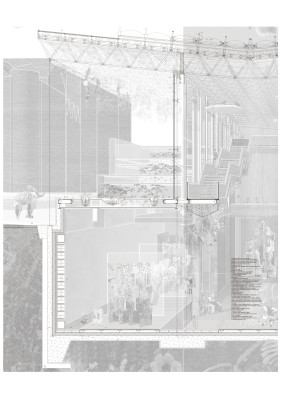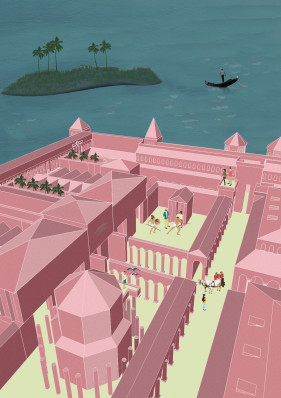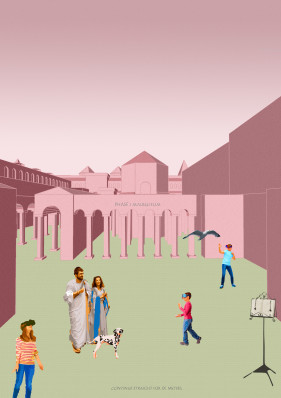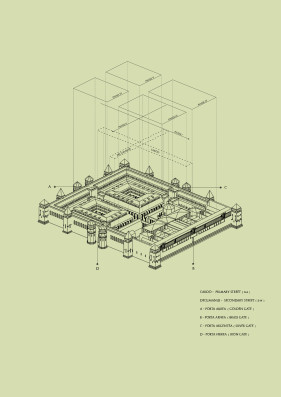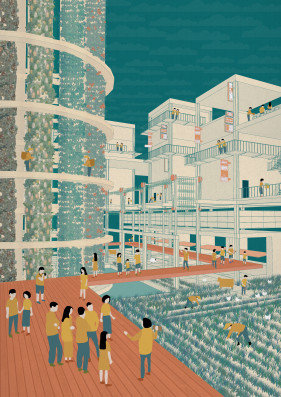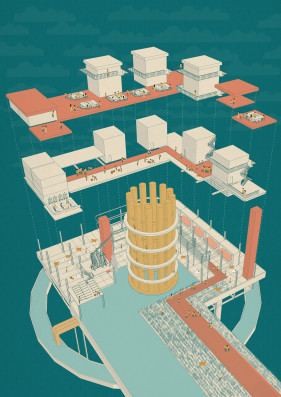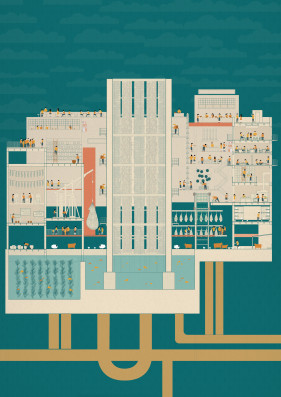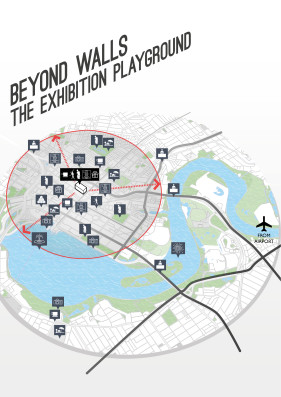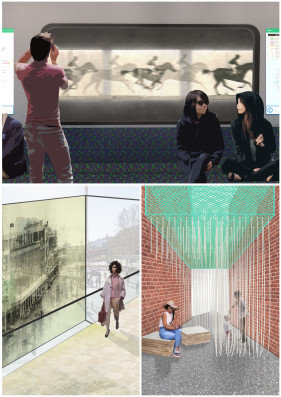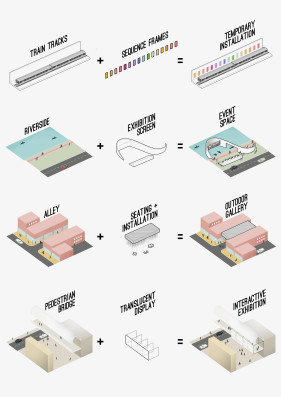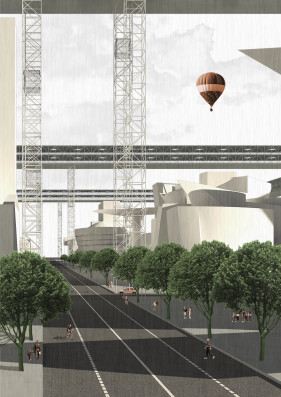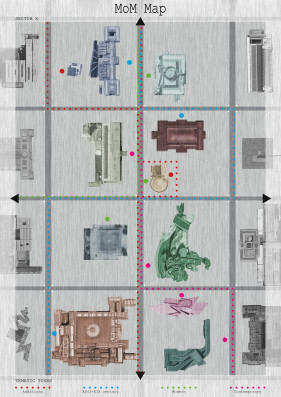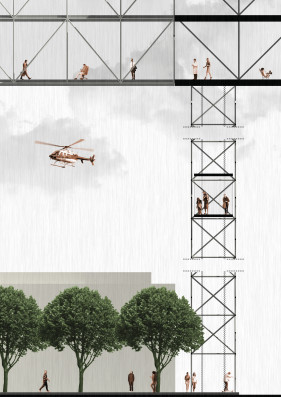,
TEAM: Sharon So, Verena Leung – The University of Hong Kong – Hong Kong
Lantern Street – City as a Hyperconnected Instrumental Museum
Could museum be spontaneous and organically developed? This design envisions a high tech streetscape, in the vertical city of Hong Kong. It celebrates museum experience with hyperconnectivity vertically, inspired by layers of neon signs across commercial streets. This urban visual language of neon signs has been a dominating element in the city, where textual and visual communication present a sense of space in the dense city. These original 2-dimensional displays are transformed into 3-dimensional spaces that connect to the existing buildings, the same ‘add-on’ approach manifested in the neon signs system. These floating volumes form a vertical network of exhibitions that connect with different parts of the city, the movable capsule could also re create new connections across the street at upper levels that enrich the compositions of experience. One could view the city as a full picture of exhibitions but also walk through individual spaces for spatial experience around the cityscape. The notion of spontaneous museum is further illustrated with the interplay between exhibits and viewers in this setting, in which the multiple perspective of visual experience can be achieved.
The city is the museum.

